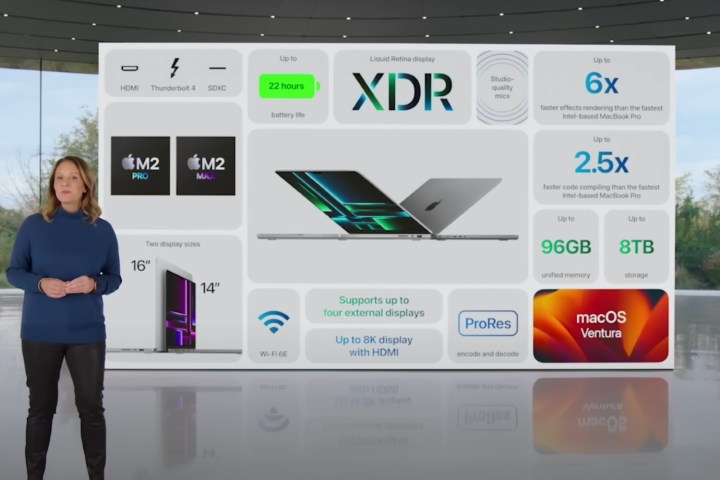The new 14-inch and 16-inch MacBook Pros have arrived, and in almost every way, they’re a solid improvement over the 2021 models. They have better graphics, longer battery life, and faster connectivity. They look the same on the outside, but the internal upgrades are real.
But there’s one aspect of these machines that may end up being worse than the original models from 2021 — and it’s an important one. I’m talking about heat, and lots of it.

Here comes the heat
Ever since the beginning, efficiency has been an important selling point of Apple Silicon. It feels miraculous how quiet and cool the M1 Macs ran, despite having great performance and battery life. These are all benefits from having more efficient chips that create less hot air.
The M2 didn’t play out quite in the same way though. In the fanless MacBook Air, the M2 did indeed provide some extra performance, but at the cost of extra heat. While running more intense benchmarks, I saw internal temperatures as high as 108 degrees Celsius on my own review unit. That is just too hot for a laptop to safely get. Other laptop manufacturers cap CPU temps at 100 degrees Celsius, but it’s rare for devices to get even this hot. The fact that Apple doesn’t have a similar cap on the M2 chips is a bit worrying, and it’s a cause of increased throttling in long, demanding workloads. It was a similar scenario with the M2 on the 13-inch MacBook Pro, despite having active cooling.
But these aren’t laptops that are necessarily made for these types of more demanding tasks. So, most people using their M2 MacBook Air won’t be in that scenario very often. But the the 14-inch and 16-inch MacBook Pros are different. These machines are meant almost exclusively for those who need the extra performance that creative applications require.
Despite having not tested them myself yet, I expect these new 14-inch and 16-inch MacBook Pros to run a bit hotter this time around for the same reason the M2 MacBook Air did.
The tech behind the tech

I’ve yet to test these machines myself, and I want to make that clear. I hope to back this up with my own temperatures measurements soon, but my reason for this expectation has everything to do with the technology behind the new M2 Pro and M2 Max chips.
The new chips are based on the same chip architecture as the base M2. As Apple calls it, “second generation 5nm,” which sounds just fine. At least, on paper. But considering what these could have been, they’re more of a stopgap measure than a true evolution.
The production problems around TMSC’s 3nm chips have been well-documented, which at one point, appear to have been what the M2 Pro and M2 Max were supposed to be based on. The 3nm chips would have been more efficient, which would have allowed Apple to get the performance gains it wanted without the extra heat. There were even some rumors that the new MacBook Pros would jump up to TSMC’s 4nm, like the A16 chip in the iPhone 14 Pro and 14 Pro Max. Instead, what Apple ended up releasing here is based on the same 5nm process node as the original M1 Pro and M1 Max.
And again, we know how these perform with the base M2 chips from an efficiency standpoint. It’s not that they’re inefficient — far from it. But they are overclocked chips that take a
So yes, the claimed 20% in improved CPU performance and 30% better graphics over the previous models is probably for real. Apple adding more cores to the CPU and GPU, and bumped up the base clock speed — and boom, there’s your performance bump. And from what I’ve seen, that performance has been confirmed. None of the early reviews that I’ve seen, however, have measured CPU temperatures. What that means, in the end, could be more throttling in tasks such as long video renders.
Again, that’s all
Don’t get me wrong — there’s so much to love about these new MacBook Pros. And if you’re coming from an ancient, old MacBook or Windows laptop, there’s very little to complain about. But for me, the M2 tempered the excitement around the release of the M2 when it came out on the MacBook Air and 13-inch MacBook Pro last year — and it’s a similar story here. When we do finally get to the 3nm
Editors’ Recommendations





